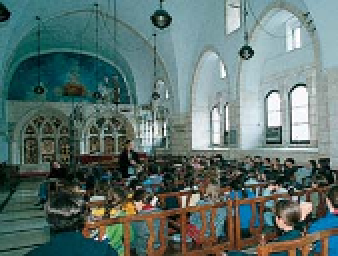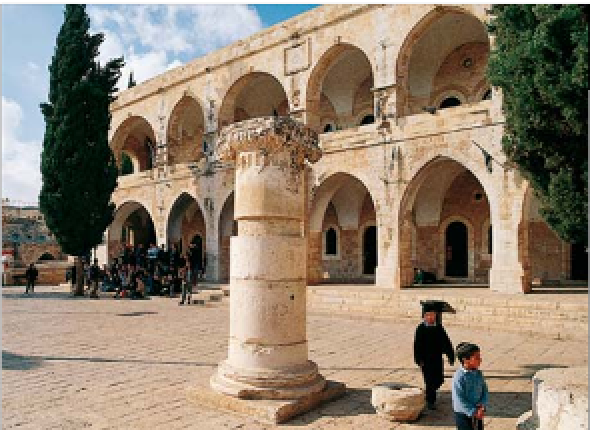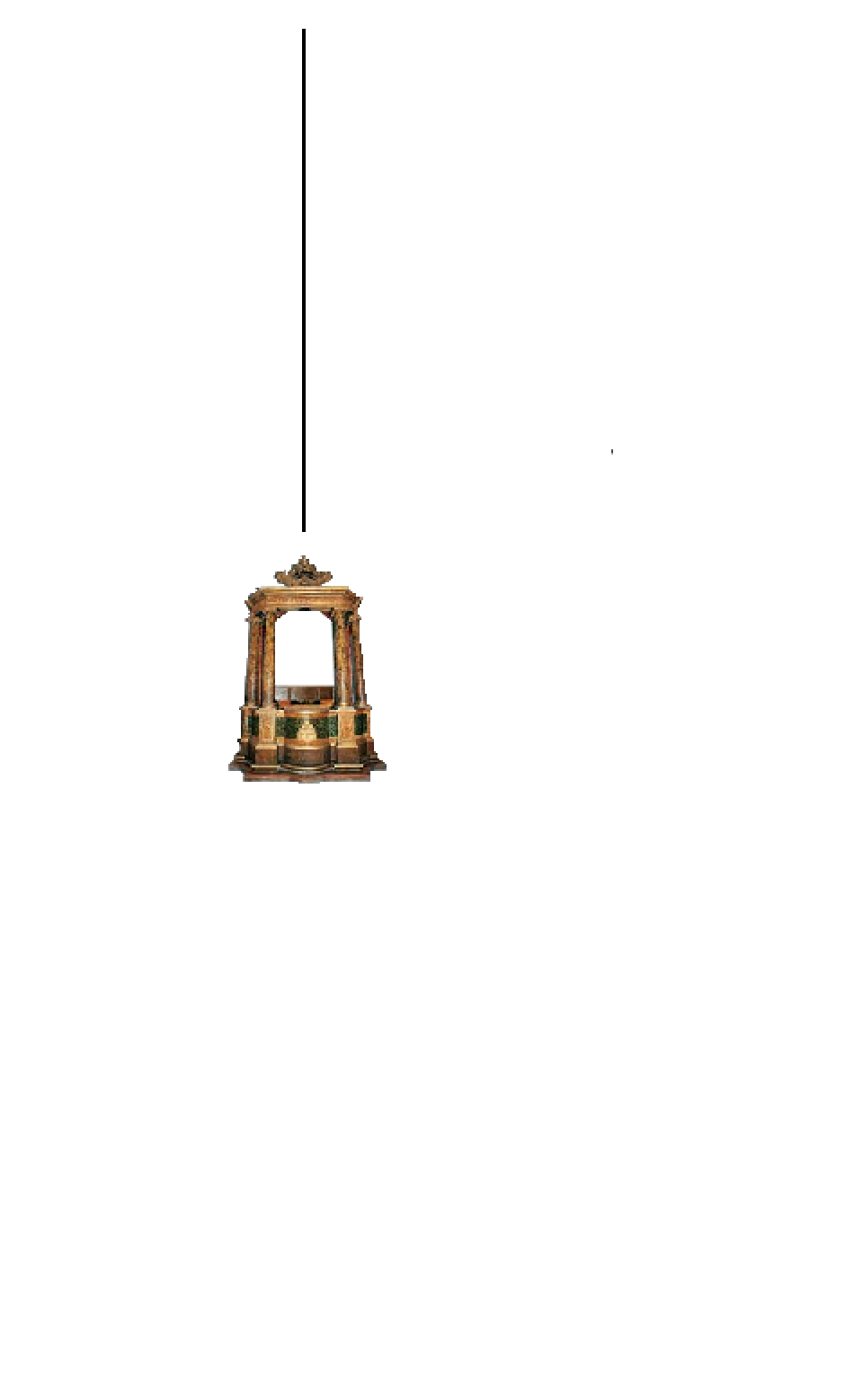Travel Reference
In-Depth Information
Batei Makhase
Square
7
Map
4 D5.
This quiet square is named
after the so-called Shelter
Houses (Batei Makhase), which
lie just south of it. They were
built in 1862 by Jews from
Germany and Holland for des-
titute immigrants from central
Europe. Tenants were chosen
by lottery and charged little
or no rent. Severe damage in
the 1948 and 1967 wars made
restoration necessary.
The work brought to light
the first remains of the Nea
(New) Basilica, whose exist-
ence had previously been
known only from the Madaba
map
(see pp216-17)
and literary
height for the build-
ings, as Ottoman
law stated that
synagogues should
not rise above the
surrounding houses.
The
Ben Zakkai
Synagogue
was
built in 1610. Its
courtyard, with
a matroneum, or
gallery for women
worshippers, was
converted into the
Central Synagogue
, whose
present form dates from the
1830s. The
Prophet Elijah
Synagogue
, created from a
study hall built in 1625, was
consecrated in 1702. Legend
has it that during prayers to
mark Yom Kippur,
The 17th-century Ben Zakkai Synagogue
The Sephardic
Synagogues
8
Ha-Tupim Street.
Map
3 C5.
Tel
(02) 628 0592.
#
9:30am-4pm
Sun-Thu, 9:30am-12.30pm Fri.
&
Y Elijah
appeared as the 10th adult
male worshipper needed for
synagogue prayer - hence the
building's name. The
Istambuli
Synagogue
was built in 1857
and, like the other three,
contains furnishings salvaged
from Italian synagogues
damaged in World War II.
)
sources. Built by Byzantine
emperor Justinian in AD 543,
it was at the time the largest
basilica in Palestine. The re-
mains of one of the apses
can be seen near the
square's southwest
corner. Although
other remains are
sparse, archaeologists
have now been able
to trace the basilica's
full extent - an enor-
mous 100 m (328 ft)
by 52 m (171 ft).
The handsome,
arcaded building on
the western side of
the square was built
for the Rothschild family in
1871. In front of it are parts of
Roman columns, whose origi-
nal provenance is unknown.
The four synagogues in this
group became the spiritual
centre of the area's Sephardic
community in the 17th century.
The Sephardim were
descended from the
Jews expelled from
Spain in 1492 and
Portugal in 1497.
They had first settled
in the Ottoman Em-
pire and then moved
to Palestine when
the latter was con-
quered by the
Turks in 1516.
When the first two
synagogues were
built, the Sephar-
dim formed the
largest Jewish community in
Jerusalem. The synagogue
floors were laid well below
street level to allow sufficient
Old Yishuv Court
Museum
9
6 Or ha-Khayim Street.
Map
3 C5.
Tel
(02) 627 6319.
#
10am-3pm
Sun-Thu, 10am-1pm Fri.
& ^
Bimah
from the
Istambuli Synagogue
This small museum, devoted
to the history of the city's
Jewish community from the
mid-19th century to the end of
Ottoman rule in 1917, occupies
one of the oldest complexes
of rooms in the Jewish
Quarter. Of Turkish
construction, thought to
date from the 15th or
16th centuries, it was
once part of a private
home. The exhibits,
consisting largely of
reconstructed interiors,
memorabilia and
photographs, also
include the Ari Syna-
gogue on the ground
floor. This was used
by a Sephardic cong-
regation during most
of the Ottoman period.
Badly damaged in the
fighting of 1936, it fell
into disuse until 1967,
when it was restored.
On the top floor is the
Rothschild House and a Roman column base and capital in Batei Makhase Square















